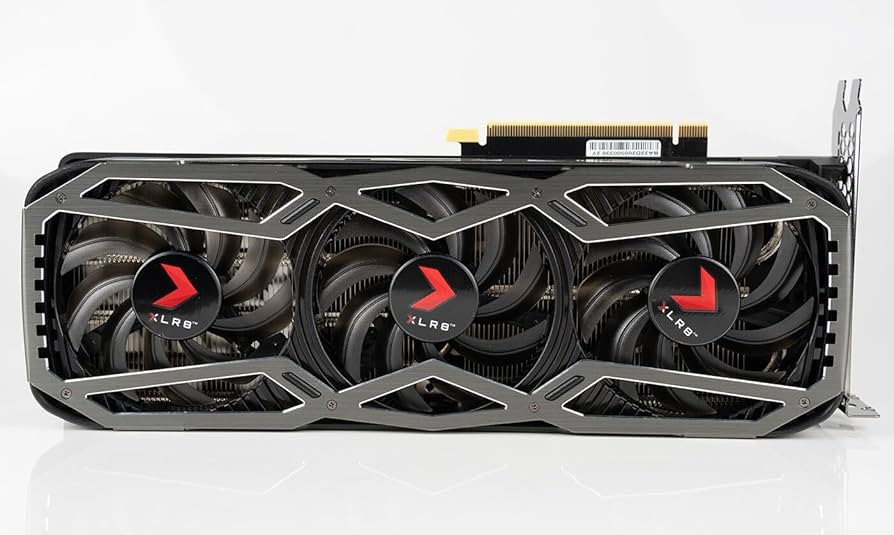For decades, the term “AI in gaming” conjured images of non-player characters (NPCs) with predictable patrol routes or chess opponents with calculated, yet soulless, strategies. It was a software concept, confined within the digital worlds we explored. Today, that paradigm has been shattered. The real revolution in gaming AI isn’t just happening on the screen; it’s taking place inside the silicon of our graphics cards, the firmware of our peripherals, and the interconnected web of our smart devices. This is the era of AI in Gaming Gadgets News, where artificial intelligence is no longer just a feature of the game but the fundamental engine powering the entire experience, from pixel generation to player immersion.
This profound shift moves intelligence from the cloud to the local machine, a trend central to AI Edge Devices News. Instead of relying solely on pre-programmed logic, modern gaming hardware leverages dedicated AI processors to enhance performance, create hyper-realistic visuals, and deliver personalized experiences in real-time. This article delves into this hardware-centric AI revolution, exploring how it’s reshaping our core components, peripherals, and the very ecosystem surrounding gaming, creating a more intelligent, immersive, and accessible future for players everywhere.
The New Silicon Brain: AI’s Transformation of Core Gaming Hardware
The most significant impact of AI on gaming gadgets is found at the heart of every gaming rig or console: the graphics processing unit (GPU). Once tasked with raw rasterization, GPUs are now sophisticated AI inference engines, fundamentally changing how game worlds are rendered and displayed.
Deep Learning Super Sampling (DLSS) and Frame Generation
NVIDIA’s Deep Learning Super Sampling (DLSS) stands as a prime example of hardware-accelerated AI in action. Traditionally, to get more frames per second (fps), gamers had to lower their resolution, sacrificing visual fidelity. DLSS flips this script. It works by rendering the game at a lower internal resolution (e.g., 1080p) and then using a trained AI model, running on dedicated Tensor Cores within the GPU, to intelligently upscale the image to a higher target resolution (e.g., 4K). The AI model analyzes motion vectors and previous frames to reconstruct the image with a quality that is often comparable, and sometimes even sharper, than a native 4K rendering.
The latest iterations take this further with AI Frame Generation. Here, the AI doesn’t just upscale existing frames; it generates entirely new ones that are inserted between traditionally rendered frames. By analyzing the motion flow between two sequential frames, the AI can predict what a new, intermediate frame should look like, dramatically boosting the perceived frame rate and smoothness. This complex real-time analysis is a feat of engineering, echoing the predictive processing seen in Autonomous Vehicles News, where AI must anticipate movement to ensure a smooth and safe experience.
Competitive Technologies and the AI Arms Race
This AI-driven approach isn’t exclusive to one company. AMD has its FidelityFX™ Super Resolution (FSR), and Intel has XeSS. While their underlying techniques differ—some are more open-source and can run on a wider range of hardware, while others rely on dedicated AI accelerators—the goal is the same: use AI to do more with less, pushing graphical boundaries without requiring impossibly powerful (and expensive) hardware. This competition is fueling an arms race measured not just in teraflops, but in TOPS (Trillions of Operations Per Second), the key metric for AI performance. This focus on visual processing and reconstruction is even drawing parallels to advancements in AI-enabled Cameras & Vision News, where AI models are used to enhance and interpret visual data in real time.
The Peripheral Revolution: Intelligent Input and Immersive Output

AI’s influence extends beyond the core components to the very gadgets we use to interact with our games. Peripherals are no longer passive tools but active participants in the gaming experience, using on-board AI to enhance precision, immersion, and communication.
AI-Enhanced Audio and Communication
Modern gaming headsets are a hotbed for AI innovation. A key feature highlighted in AI Audio / Speakers News is real-time noise cancellation. Using AI, headsets can distinguish the user’s voice from background noise—a mechanical keyboard, a barking dog, or a running fan—and selectively filter it out. NVIDIA’s Broadcast software is a powerful example, using the GPU’s AI capabilities to clean up both incoming and outgoing audio for crystal-clear communication. Furthermore, AI is being used to enhance spatial audio, creating more realistic 3D soundscapes that can be personalized to the unique shape of a user’s ears, providing a significant competitive advantage in games where audio cues are critical.
Smarter Controls and Future Interfaces
Input devices are also getting smarter. Mice with AI-powered sensors can predict motion to reduce latency and smooth out jitter, providing a more consistent and accurate aiming experience. Keyboards can use AI to create dynamic lighting effects that react intelligently to in-game events. Looking forward, the most exciting developments are in the realm of Neural Interfaces News. Companies are actively researching brain-computer interfaces (BCIs) that could one day allow players to control games with their thoughts. While still in the domain of AI Research / Prototypes News, these devices represent the ultimate fusion of player and machine, enabled entirely by AI’s ability to interpret complex biological signals.
The Immersive Frontier: AR/VR and AI
In the world of virtual and augmented reality, AI is indispensable. As seen in AR/VR AI Gadgets News, AI-driven eye-tracking is a cornerstone technology. By knowing precisely where the user is looking, headsets can employ foveated rendering—a technique where only the center of the user’s gaze is rendered in full detail, while the periphery is rendered at a lower resolution. This dramatically reduces the computational load, allowing for higher-fidelity virtual worlds on less powerful hardware. AI also powers gesture tracking, voice commands, and the creation of believable AI-driven avatars, making virtual interactions more natural and compelling. These advancements are closely tied to the broader field of Smart Glasses News, where similar AI techniques are used to overlay information onto the real world.
The Expanding Ecosystem: AI’s Role Beyond the Gameplay Loop
The integration of AI in gaming gadgets is creating a connected ecosystem that extends far beyond the immediate gaming session, impacting content creation, accessibility, and even our living spaces.
AI for Creators and Competitive Play
The rise of streaming and esports has created a massive demand for sophisticated production tools. AI Tools for Creators News are now leveraging hardware-level AI to automate tedious tasks. NVIDIA’s ShadowPlay Highlights can automatically identify and capture key moments in a game—a winning kill, a major objective taken—and compile them into a shareable reel. For esports, AI analytics tools can process gameplay data to provide players with deep insights into their performance, identifying weaknesses and suggesting strategies for improvement. This application of performance tracking mirrors trends in AI in Sports Gadgets News, where AI is used to analyze athlete biometrics and movements.

A New Era of Accessibility
Perhaps one of the most important applications of AI in gaming is its potential to make digital worlds accessible to everyone. AI for Accessibility Devices News showcases a range of innovations, from real-time transcription and translation of in-game voice chat to adaptive controllers that can be configured using AI-driven software. Microsoft’s Adaptive Controller is a platform that, when combined with AI-powered voice control software, allows players with limited mobility to execute complex in-game commands. This ensures that the joy and community of gaming can be shared by a wider audience than ever before.
Gaming in the Connected Smart Home
As our homes become smarter, gaming is becoming a more integrated part of the environment. Imagine winning a tense match and having your room’s AI Lighting Gadgets News, like Philips Hue, flash your team’s colors in celebration. Or your AI Assistants News device announcing that your friends are online and ready for a raid. This level of integration, powered by a network of AI Sensors & IoT News, transforms gaming from a siloed activity into a dynamic component of your Smart Home AI News ecosystem, creating a more ambient and responsive experience.
Navigating the AI Future: Recommendations and Considerations
While the benefits of AI in gaming gadgets are immense, this technological shift is not without its challenges and potential pitfalls. It’s crucial for consumers and developers to navigate this new landscape with a clear-eyed perspective.

The Pros: A Clear Upgrade
- Performance Boost: AI upscaling and frame generation provide “free” performance, enabling higher resolutions and frame rates on existing hardware.
- Enhanced Immersion: From realistic audio to responsive VR, AI makes virtual worlds feel more tangible and believable.
- Greater Accessibility: AI-powered tools are breaking down barriers, allowing more people to participate in gaming.
- Personalization: AI can tailor experiences to individual players, from audio profiles to control schemes, a trend also seen in AI Fitness Devices News.
The Cons and Pitfalls
- The “Black Box” Problem: The decisions made by complex AI models can be difficult to understand, which can lead to unpredictable or undesirable behavior in games.
- Potential for Misuse: The same AI that powers legitimate features can be exploited for cheating. AI-powered aimbots that are nearly undetectable pose a significant threat to competitive integrity, a major concern in AI Security Gadgets News.
- Data Privacy: Peripherals that learn from the user, from AI Companion Devices News to biometric sensors, collect vast amounts of data. Ensuring this data is handled ethically and securely is paramount.
- Rising Costs: The dedicated silicon required for powerful on-device AI can drive up the cost of GPUs and other gadgets, potentially widening the gap between high-end and budget-conscious gamers.
Tips and Best Practices
For consumers, it’s important to look beyond marketing buzzwords. Understand what the AI features actually do. Does the AI noise cancellation on a headset genuinely improve communication, or is it a gimmick? For developers, transparency is key. Clearly communicating how AI is being used in a game or device builds trust. Furthermore, adopting an “ethical AI” framework during development can help mitigate risks related to bias, privacy, and misuse, ensuring that the technology is used to enhance, not exploit, the player experience.
Conclusion: The Dawn of the Intelligent Gaming Era
The integration of artificial intelligence into gaming hardware marks a pivotal moment in the history of interactive entertainment. We have moved far beyond the simple pathfinding of early NPCs. AI is now a foundational technology, woven into the very fabric of our gaming gadgets. It is the silent partner that renders our worlds, clarifies our communications, and deepens our immersion. From the Tensor Cores in a GPU to the neural networks processing audio in a headset, AI is unlocking performance and experiences that were once the stuff of science fiction. While challenges around ethics, security, and cost remain, the trajectory is clear. The future of gaming is not just about better graphics or bigger worlds; it’s about smarter, more responsive, and deeply personalized experiences, all powered by the ever-advancing intelligence within our hardware.










